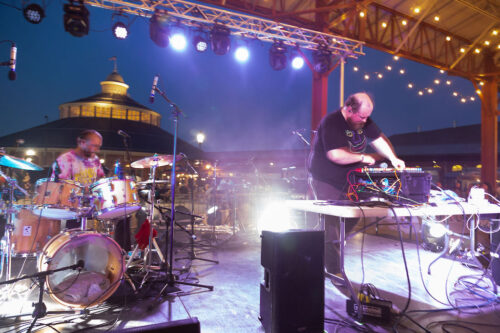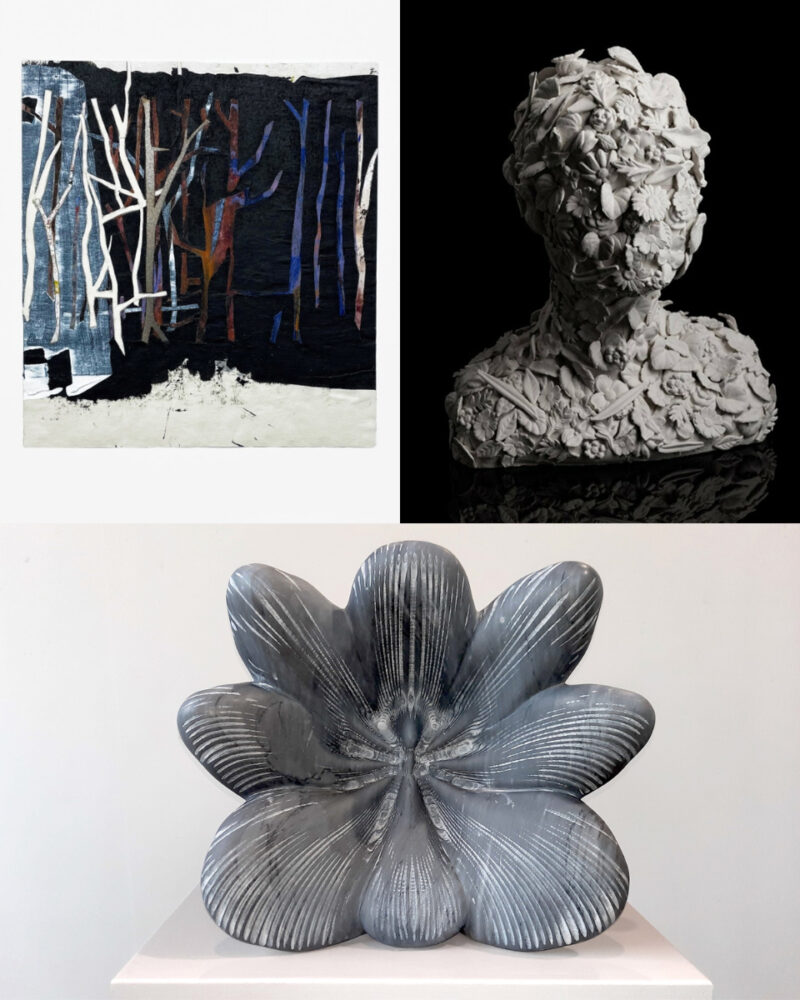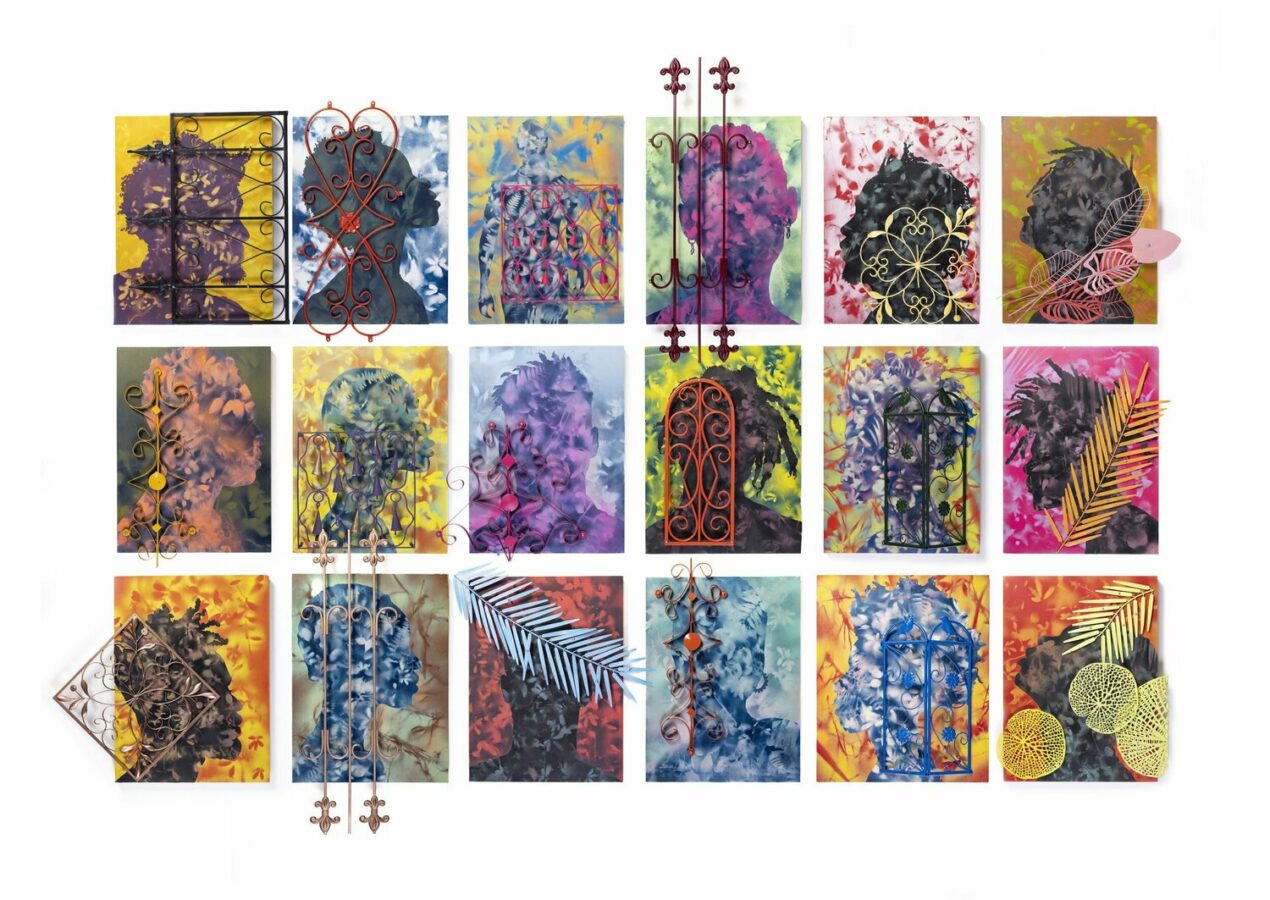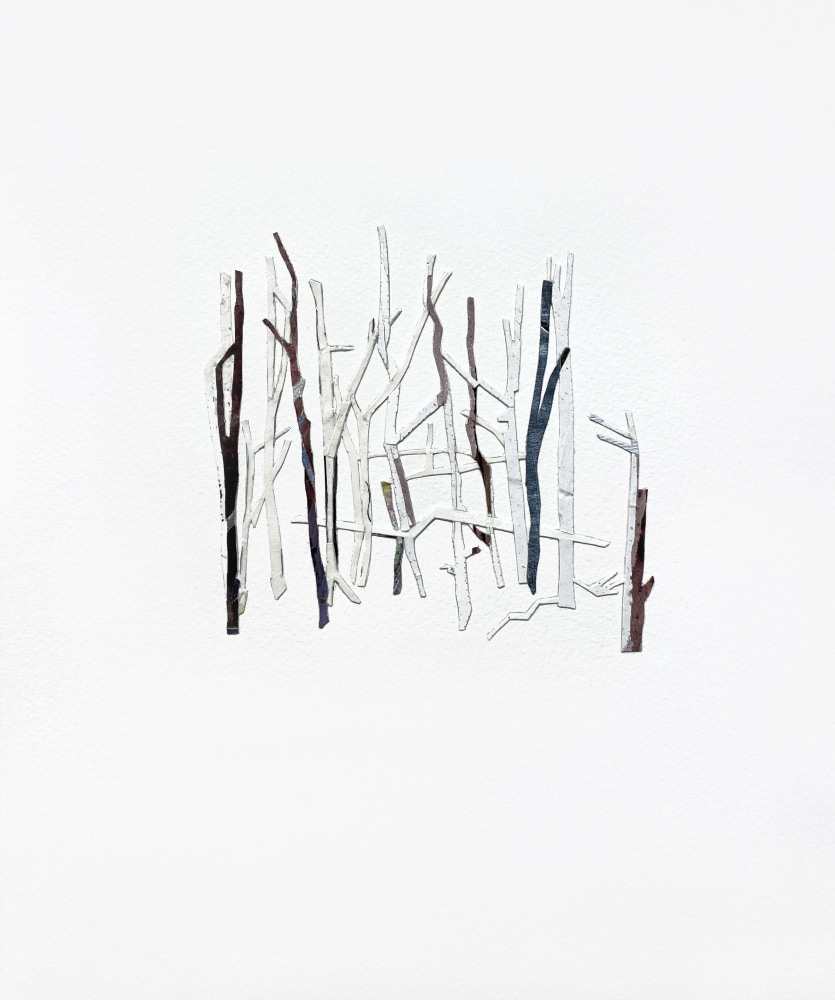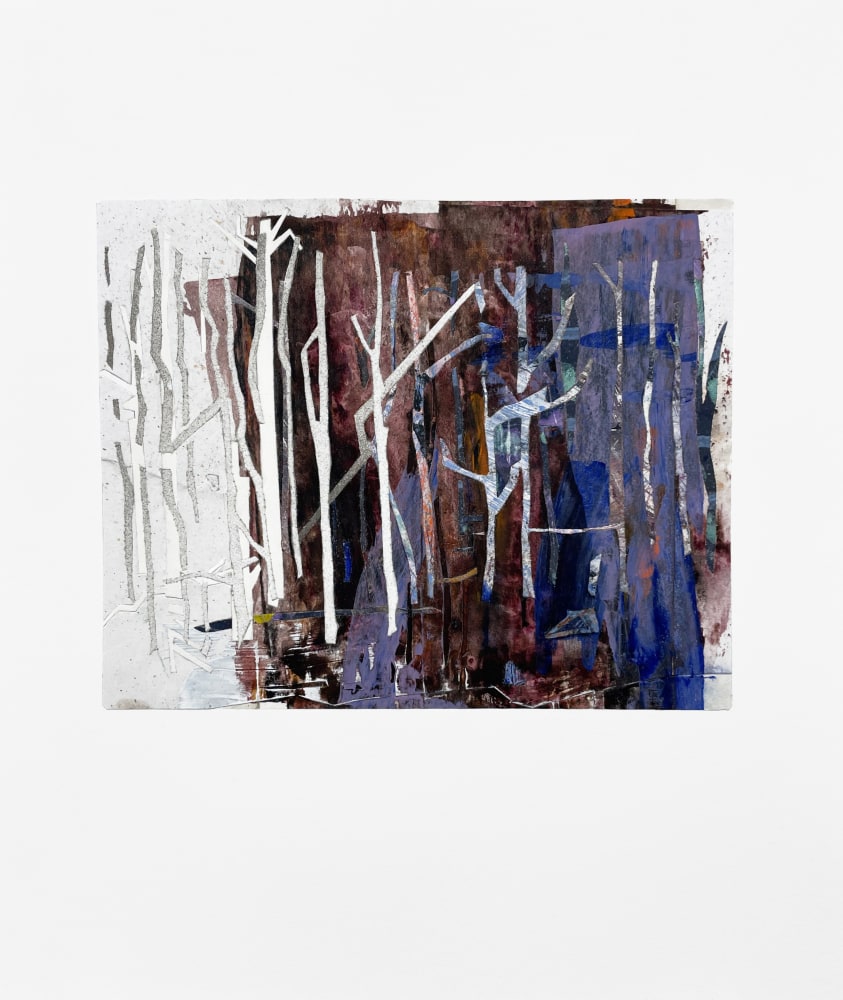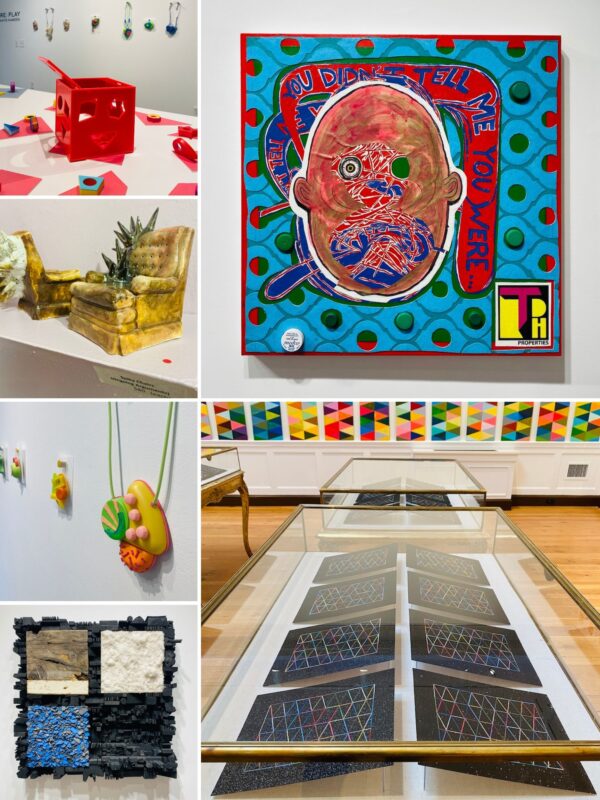In “Living in the Sunshine II” (2020-22), Isherwood utilizes Bardiglio Imperiale marble in an eight-petaled flower. Its formation boasts an intriguing blend of geometry and organic form, with undulating curves that bring to mind the intricate layering of 3D-printed objects. Not only does the artist play with scale, but also the enrapturing detailing of the stone. The sheer combination of these elements leaves me wanting to seek out more of the artist’s sculptures.
Jae Ko opts to use a lighter material: paper. Yet, her sculptures are bursting with tension and equally hold their presence in the gallery. “JK1011 Ultramarine Blue” (2018) hangs in the back room of the gallery, and I feel hypnotized by the circular form. With grooves and indentation rippling through, I’m reminded of tree rings, alluding to the process of layering and the passing of time.
Natural motifs also appear in John Ruppert’s iron, bronze, and aluminum castings of rocks and trees, some combined with actual rock. “Torque: Lightning Strike Series” (1995) is an aluminum cast of a ruptured piece of wood when lightning struck a tree. The thin strip is standing tall against a wall. As casting is a process of transformation, not only does it capture the metamorphosis of an ephemeral object, but it also pinpoints a moment of extreme energy transformation.
Metal is also an essential element for Anthony Carro and Jane Manus, yet their works are entirely different. While Manus works with aluminum tubes seamlessly cut and welded into gestural linear forms and painted in glossy monochromes, Carro creates a tumultuous composition of bent and “ripped” steel plate, pipe, and rod welded together in “Table Piece CCLVI” (1975). Gesture, form, and balance play crucial roles in these works and their varied aesthetic looks showcase the multitude of possibilities of metal.
Formalism and the material are privileged in these objects. They are connected through a love of making evident in their presence and craft.
A Sculpture Show is on view at C. Grimaldis Gallery through July 8, 2023.
…..

